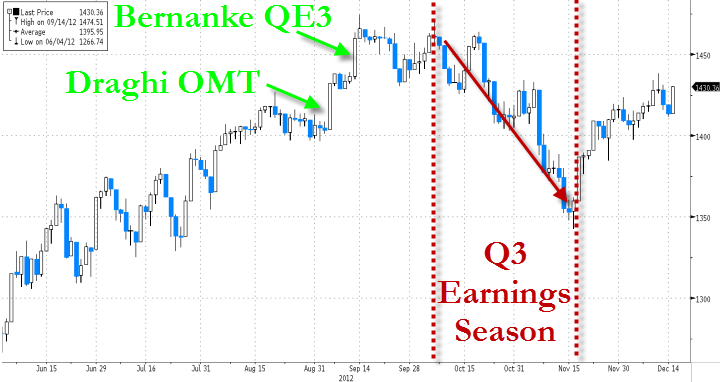Risk On or Risk Off That is the Question
Post on: 28 Март, 2015 No Comment

For years we have heard about the risk on trade and how the move into riskier and riskier assets was helping drive stock markets higher. Whether it really is Zero Interest Rate Policies (ZIRP) or just a renewed appetite for speculative risk, the market has certainly seen its fair share of rising prices of riskier and riskier assets. First it was Treasury bonds, then it was municipal bonds (NYSEARCA:MUB), then it was high yielding bonds, and or course it was also equities.
Now a few of those primary risk vehicles have stopped moving higher and are flashing warning signs that the risk off trade may now be the path of least resistance.
If so, should we expect risk off to eventually move into the S&P and Dow?
Given that equities are inherently a riskier asset class than bonds (and most other asset classes), maybe we should.
Risk off is Prevalent in Key Markets
Anyone who is taught anything about investments knows that equities are supposed to be riskier than bonds. Part of this is due to the pecking order of liquidation rights, but also because of the interest versus dividend payment structures inherent in each.
It is safe to say that over the long run equities are a riskier asset than bonds, even high yield bonds.
Have investors forgotten this golden rule?
Check out the first chart below which shows the last five years of rising corporate bond (NYSEARCA:JNK) prices. For years, investors reaching for yield have piled into this market. As a corollary, and would be expected, equity prices have also risen. This is shown in the bottom section.
But something is occurring right now that many investors are missing. Corporate bonds (NYSEARCA:LQD) are now starting to decline in price as the graph shows. Money is leaving that market in a sign of risk off.
Looking back at the chart, a similar thing occurred in the 2011 20% market decline. Money left high yield, and it also left equities as risk off was back in vogue.
This time around is different, money is leaving high yield, but it continues to pile into the riskier equity asset class, and something must eventually give.
Not Just Bonds, but Equity Investors are also Taking Risk Off
In addition to high yield bonds declining in price since June, money is also being pulled from one of the riskiest of all asset classes, foreign small cap stocks.
Check out the chart below of the iShares MSCI EAFE Small Cap Index (NYSEARCA:SCZ). Along with the rest of the worlds equity markets, it fell sizably in September, but like high yield debt, small cap stocks have been declining in price since this Summer. From its peak, this ETF fell 18% into October and still sits 10% below its previous price peak.
And, this isnt a one off phenomena affecting some tertiary equity market halfway around the world. The U.S. Small Cap Index (NYSEARCA:IWM) also peaked in price back in July, still underperforming the S&P 500 by 10% year to date.
The New York Stock Exchange Composite Index (NYSE:^NYA) also saw its price peak back in July, not joining the S&P or Dow in new all time highs as only 56% of the 1800 companies that trade there are even above their 200 day moving averages.
Finally, the most popular emerging market ETF (NYSEARCA:EEM) remains well below its $46 price peak from September. Today, at $41, it remains below its 200 day moving average and down over 10%, participating in very little of the snap back rally seen by the domestic large cap markets.
Money is being pulled from corporate and high yield debt markets, and money is also being pulled from the worlds smaller market cap and foreign stocks. Risk is indeed being pulled off the table.
History suggests its likely just a matter of time before all equities and other riskier assets are also affected negatively.
The ETF Profit Strategy Newsletter uses technical, fundamental, and sentiment data to keep investors on the right side of the markets. Money is already leaving some of the riskier asset classes. Find out how to capitalize on this changing dynamic.
You can also follow us on Twitter @ETFguide














